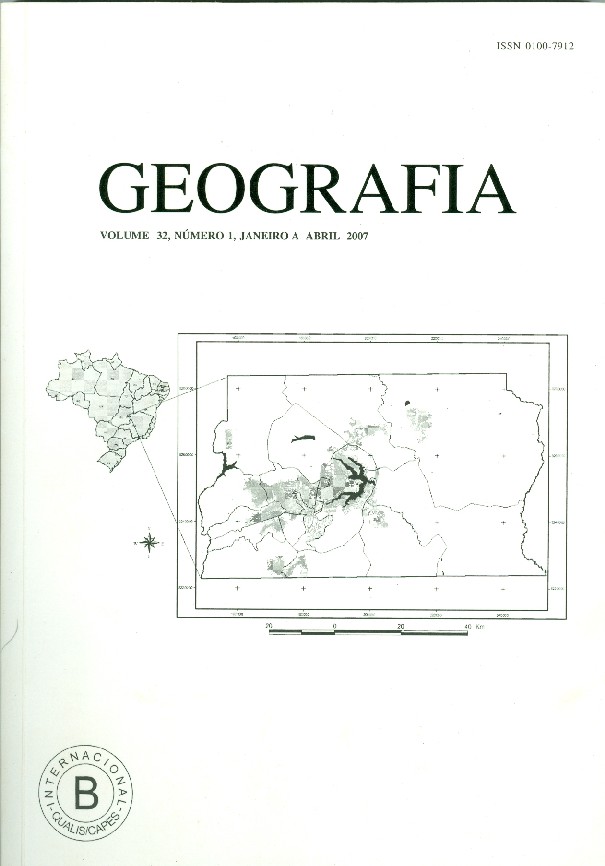Hydrologic superficial process and land use in Guarapuava-PR: small plots measurements
Abstract
Soil erosion is one of the most important processes in Geomorphology research. Land use and soil tillage have been recognized as factors of either controlling or increasing soil erosion. For these reasons, this study aims at: evaluating the hydrological response in different land uses with low technology practices; appraising hydrological response in ³30,0 mm rainstorm events; assessing runoff and sediment production in each land use and comparing total sediment production in the different land uses. The experiment was carried out along 17 months and the runoff and sediment were set out in 10 small plots. The total of 156 rainfall events were registered and the accumulated precipitation was 2532,5 mm. Runoff in pasture was higher than in the other land use (23,1%, plot 2). The degraded area had the highest sediment production (36,07 t/ha/yr), followed by subsistence agriculture with 2,77 t/ha/yr (plot 12). The lowest sediment mobilization occurred in forest area with 0,12 t/ha/yr (plot 8). As a result, a range of hydrological responses and sediment production were observed in the different land uses. Key words: Hydrologic process. Land use. Guarapuava-PR.Downloads
Issue
Section
License
The authors maintain the copyright and grant GEOGRAFIA the right of first publication, with the articles simultaneously licensed under the Creative Commons BY 4.0 License, which allows sharing and adapting the articles for any purpose, as long as appropriate credits and provisions of image rights, privacy or moral rights. Other legal attributions can be accessed at: https://creativecommons.org/licenses/by/4.0/legalcode.en.
Geography, Rio Claro, SP, Brazil - eISSN 1983-8700 is licensed under the Creative Commons BY 4.0 License.





